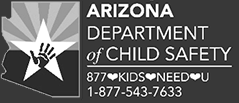The Newborn and Withdrawal
Fostering an opiate-exposed baby is a frightening prospect for many to consider. Opiate exposure during pregnancy can cause the baby to become drug dependent; a baby born dependent that experiences withdrawal is usually diagnosed with Neonatal Abstinence Syndrome (NAS) at birth.
Not all opiate-exposed babies experience withdrawal. The timing and dosage of the expectant mother’s drug use influence whether the baby experiences NAS. According to studies, the degree of long-term effects from prenatal opiate exposure is not related to whether the baby was born dependent.
Withdrawal begins shortly after birth and symptoms usually last from three days to two weeks. Morphine is usually the medication of choice to treat newborns, with the dosage set to relieve symptoms and then slowly reduced.
In general, symptoms of NAS can range from mild—colic-like symptoms—to severe—seizures and pauses in breathing.
Specifically, typical signs of NAS include:
- High pitched cry
- Tremor/jittering/shaking of arms, legs, face
- Yawning
- Difficulty sucking at feeding times
- Poor weight gain
- Fast breathing
- Frantic sucking—fist, fingers, thumbs
- Need for supplemental oxygen
To soothe and nurture your opiate-exposed baby, try the following:
- Decreasing external stimulation (quiet environment with dark or dimmed lights)
- Cuddling and rocking
- Swaddling
- Skin-to-skin contact (kangaroo care)
- Nonnutritive sucking (pacifier)
- Warmth
- Massage
- Waterbed
Preparing to foster an opiate-exposed baby, you need to know that the worst usually lasts only a short period of time and your presence, comfort, and care will make a significant difference in launching this child well!
Supporting Opiate-Exposed Children
Moving through the toddler and childhood years and beyond, your child may continue to show signs of prenatal drug exposure. Since this exposure can result in damage to the developing brain, the child’s brain may be misfiring. What you’d consider odd or unacceptable behavior in other children might be behavior this child cannot control. So getting support and guidance from medical and mental health professionals is essential. They’ll help you understand, identify, monitor, and navigate the unique struggles your child faces.
Here’s a rundown of some emotional, behavioral, and cognitive challenges many drug-exposed children encounter:
Emotional:
- Anxiety and worrying
- Sadness, inability to enjoy activities
- Negative self-esteem
- Guilt and self-blame
- Pessimism about the future
- Ability to attach to strangers easily, but difficulty trusting caregivers
Behavioral:
- Enjoys being alone
- Eats too much or not enough
- Difficulty paying attention; short attention span
- Struggles with transitions and changes in routine, physical surroundings
- Difficulty getting along well with others
- Lack of care about what happens to them
- Rapid changes from high energy to utter exhaustion
Cognitive:
- Difficulty talking and listening
- Trouble reading – especially learning to move from left to right
- Trouble remembering a list of things
- Difficulty remembering what they were just told
- Inability to learn from mistakes or experiences
- Difficulty picking up on cues
- Trouble paying attention – easily distracted
Helping the Child You Care For
With the guidance of professionals, help your child learn positive and constructive ways to show their feelings, such as talking, writing, and drawing pictures, and physical activity.
Here are some other ways you can help them:
- Create and use predictable routines; do things the same way, every time, over and over again
- Keep things quiet and calm—diminish or remove background noises and distractions
- Use simple, understandable language and examples
- Employ multiple teaching/learning methods–let them see it, touch it, taste it, feel it, or even act it out
- Be realistic about what you expect; understand they may not act their age; parent based on the child’s emotional age
- Give support and encouragement; be as positive and optimistic as possible
- Help them feel safe; read their signals—eyes and body language—to detect anxiety, then act to prevent meltdowns before they happen
- Teach with your actions, not just your words
- Teach empathy by communicating understanding, sympathy, and compassion
Helping Yourself
- Obtain a thorough medical history of your child
- Get support from other caregivers
- Explore additional training
- Research and use local resources
· Take advantage of respite services and rest














